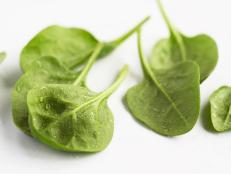Nutrition News: Optimal Meal Timing, Workday Walking, Gut Speed

Yagi Studio, Yagi Studio
Optimal meal timing? The jury is out.
We know what we eat is important, but does it matter when we eat it? A new research review has concluded that national dietary guidelines ought to provide us with stronger recommendations about optimal meal timing.
“Whilst we have a much better understanding today of what we should be eating, we are still left with the question as to which meal should provide us with the most energy. Although the evidence suggests that eating more calories later in the evening is associated with obesity, we are still far from understanding whether our energy intake should be distributed equally across the day or whether breakfast should contribute the greatest proportion of energy, followed by lunch and dinner,” Dr. Gerda Pot, who was involved with the study at the King’s College London, said in a release. “There seems to be some truth in the saying ‘Eat breakfast like a king, lunch like a prince and dinner like a pauper,’ however, this warrants further investigation.”

Ezra Bailey, Ezra Bailey
Get up and walk around.
Your standing desk may be doing less for your waistline than you’d like to think. A new study, conducted at the University of Pittsburgh’s Physical Activity and Weight Management Research Center, has concluded that standing at work, rather than sitting, though it may have other health benefits, burns only 8 or 9 extra calories per hour. (By comparison, The New York Times points out, “a single cup of coffee with cream and sugar contains around 50 calories.”)
Walking for an hour mid-workday may be a more effective weight-management plan, however, burning 130 calories per hour. Seth Creasy, the study’s lead author, suggests workers position printers a distance from their desk or eschew water bottles and work regular walks to the water fountain into their routine. “Brief periods of walking can add up to make a big difference,” he told the Times.

rzdeb, rzdeb
Digestive health and gut speed are connected.
When it comes to digestive health, time may be of the essence. The time it takes the food you eat to travel through your gut affects the amount of “harmful bacterial degradation products” your body produces along the way, a new study from the National Food Institute, Technical University of Denmark, has concluded. Basically, the longer food takes to travel the length of your gut, the more harmful bacteria is produced.
“Conversely, when the transit time is shorter, we find a higher amount of the substances that are produced when the colon renews its inner surface, which may be a sign of a healthier intestinal wall,” professor Tine Rask Licht explains in a release, adding that diet can help. “You can help food pass through the colon by eating a diet rich in fiber and drinking plenty of water. It may also be worth trying to limit the intake of, for example, meat, which slows down the transit time and provides the gut bacteria with lots of protein to digest. Physical activity can also reduce the time it takes for food to travel through the colon.”
Amy Reiter is a writer and editor based in New York. A regular contributor to The Los Angeles Times, she has also written for The New York Times, The Washington Post, Glamour, Marie Claire, The Daily Beast and Wine Spectator, among others, as well as for Salon, where she was a longtime editor and senior writer.

































